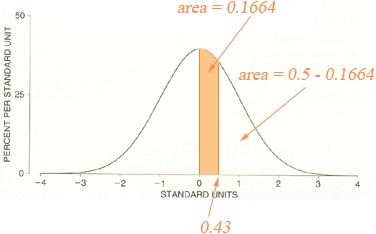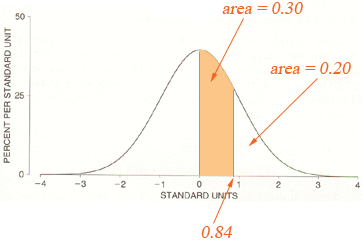| |||
| Math Central | Quandaries & Queries |
|
Because of the relativity high interest rates, most consumers attempt to pay off their credits card bills promptly. However, this is not always possible. An analysis of the amount of interest paid monthly by a bank’s Visa cardholders reveals that the amount is normally distributed with a mean of $27 and a standard deviation of $7.
|
Hi Jenny,
The answer you sent for the first question was
(a) P (Pay more than $30) = P (x > 30)
= P (>
)
= P (Z > 0.43)
= 0.1664
I agree with everything except the last step. From the standard normal table P(0 < Z < 0.43) = 0.1664 and you want P(Z > 0.43) = P(0 < Z) - P(0 < Z < 0.43) = 0.5 - 0.1664 = 0.3336.

You have a similar error in the second two parts. For the last question you want to find k so that P(X > k) = 0.20 which converts to P( (X - μ)/σ > (k - 27)/7) = P(Z > (k - 27)/7) = 0.20. Hence you want to find k so that P(0 < Z < (k - 27)/7) = 0.5 - 0.20 = 0.30.

In my normal table the closest I can find to 0.30 is P(0 < Z < 0.84) = 0.2995 hence (k - 27)/7 = 0.84. Solve for k.
I hope this helps,
Harley
 |
||
Math Central is supported by the University of Regina and The Pacific Institute for the Mathematical Sciences.